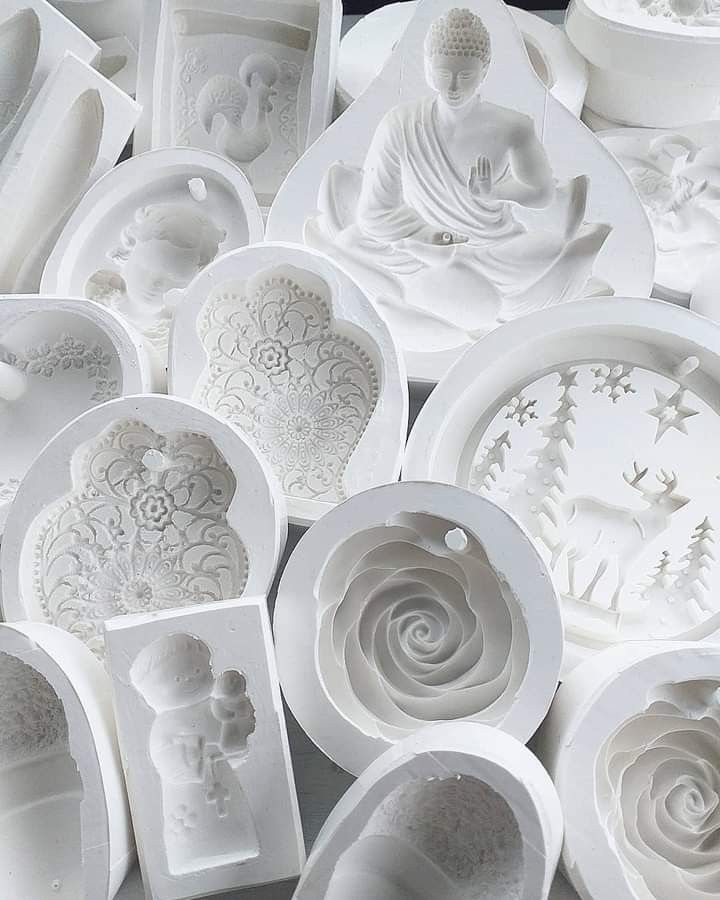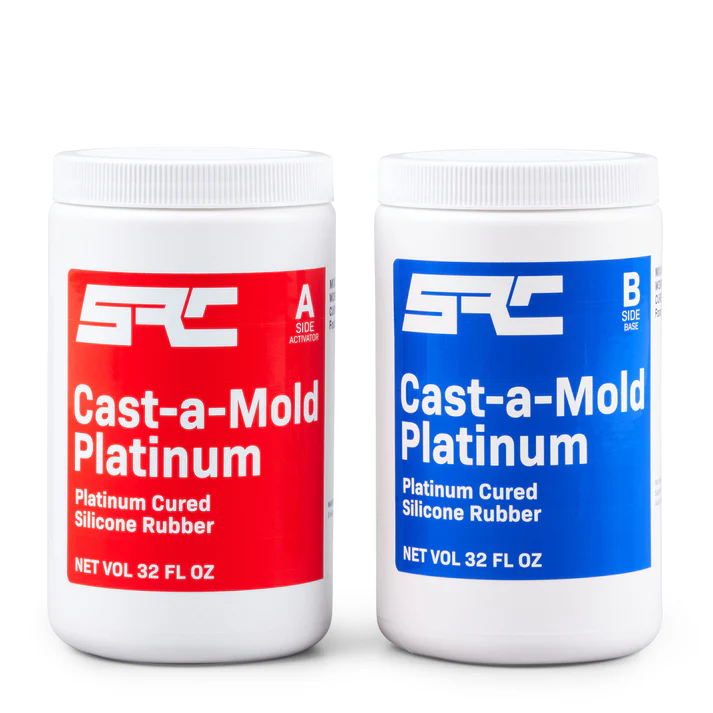Resin Mold Making Mistakes and How to Avoid Them: A Practical Guide for Better Results
Resin mold making can be both exciting and frustrating—especially when you’re new to the craft or experimenting with new techniques and materials. Whether you’re pouring coasters, jewelry, figurines, or functional parts, achieving a flawless resin piece starts with a reliable mold and a careful approach.
Over the years, I’ve picked up plenty of lessons—often the hard way—about avoiding common mistakes when it comes to mold making for resin casting. This guide is designed to walk you through the most frequent errors, why they happen, and how to prevent them. While mold making fundamentals apply to various materials, resin tends to require extra attention to detail in both mold prep and pouring, due to its finish expectations and exothermic curing process.
My biggest and most repeated resin mold making mistakes were not leveling the model and mold properly while making it or pouring the finished piece, and followed by not sealing my model or mold box correctly. I still occasionally miss sealing a joint to this day.
Table of Contents

1. Start with Smart Planning
A successful resin mold begins long before you pour any resin. Good planning helps avoid both simple and costly mistakes. Here are key things to plan for:
- Mold type and material: Food grade Silicone molds are best for resin due to their heat resistance. Resin generates heat (exothermic reaction) during curing, which can melt or warp lesser materials like plastic or some latexes.
- Model placement: If you’re making your own mold, ensure the original model is free from undercuts (unless a two-part mold is planned).
- Mold box design: Leave space around the object for clean edges, but not too much to use extra material, and make sure the box is level, stable, and well sealed to its base and at all joints
- Ventilation and environment: Work in a clean, dust-free, and well-ventilated area. Resin fumes can be strong, and dust ruins finishes.
- Tools on hand: You’ll need mixing containers, stir sticks, a level surface, gloves, a respirator (ideally), and release agents if using non-silicone molds.
Planning not only boosts your confidence, it gives you the flexibility to troubleshoot along the way without panicking.
2. Common Resin Mold Making Mistakes (and How to Fix Them)
Let’s look at the most common problems that arise when making or using molds for resin casting, along with practical solutions.
Mistake #1: Using the Wrong Mold Material
Resin gets hot as it cures. Using non-heat-resistant materials like basic plastic or certain rubbers can result in a ruined mold and a deformed project.
Fix: Use high-quality platinum or tin-cure silicone molds, which can handle the heat and provide excellent detail reproduction. Always check the mold’s temperature tolerance in the product specs.
Mistake #2: Not Leveling the Mold
An uneven mold surface can cause the resin to pool in one area, resulting in lopsided casts or excess flash.
Fix: Use a spirit level to confirm your workspace is flat. You can also shim under one side of the mold if needed. Place your mold box on a sheet of glass or MDF for stability.
Mistake #3: Not Using Mold Release When Needed
Some resins, particularly polyurethane and polyester types, may bond aggressively with your mold—even if it’s silicone.
Fix: Use a mold release agent (spray or wax) when recommended. It protects both your mold and your project. Even when using high-quality silicone molds, a light release coat extends mold life.
Mistake #4: Poor Mixing Technique
Resin that’s under-mixed or mixed incorrectly can cure with soft spots, bubbles, or tacky surfaces. Fast mixing also introduces air that can show up in your cast.
Fix: Mix slowly and thoroughly. Scrape the sides and bottom of your container. For best results, transfer the mix into a second cup and stir again (the double-cup method). Follow your resin’s ratio instructions exactly.
Mistake #5: Overfilling or Pouring Too Fast
Pouring resin too quickly can overflow the mold or trap air, while overfilling can waste material and lead to cleanup headaches.
Fix: Pour resin in a slow, controlled stream into one corner of the mold and let it flow naturally. This reduces trapped air and surface ripples. Use a pipette or squeeze bottle for smaller molds.
As an Amazon Associate, I earn from qualifying purchases.
This post contains affiliate links. If you buy through them, I may earn a commission at no extra cost to you.

Where to Buy This Silicone
This 64oz Cast-a-Mold Platinum Silicone kit (2 × 32oz) is available from both Amazon and the official supplier, SRC (part of Polytek). Both are trusted sources, but there are a few important differences worth noting.
You can purchase it on Amazon for convenience, especially if you already shop there regularly or have Prime.
However, for specialty materials like this, Amazon orders are often fulfilled by third-party sellers (not directly from Amazon warehouses)—which means delivery times and storage conditions can vary slightly. It’s something to be aware of, especially with shelf-sensitive materials.
Alternatively, buying direct from SRC offers much better value—currently $64.07 after their 11% discount. If you’re combining your order with other materials (like resins or additional silicone kits), you may also qualify for free shipping on orders over $200. They carry a wide range of materials like epoxy resins, casting rubbers, and mold-making tools.
| Vendor | Link | Best For |
|---|---|---|
| Amazon | Buy on Amazon | Fast shipping, Prime convenience, casual use |
| SRC / Polytek | Speciality Resin | Lower price, pro-grade options, bulk buying |
I’m affiliated with both sources, so whichever one you choose helps support this content—thank you!
Author’s Note:
I’ve previously ordered full 55-gallon kits directly from Polytek via ground shipping and always received fresh stock, packed well. For shelf-sensitive materials like platinum-cure silicone, I trust direct shipping from SRC more than third-party fulfillment—especially when working on larger or time-critical projects.
3. Practical Resin Mold Making Checklist
Here’s a go-to checklist to help you stay consistent:
- Use heat-resistant silicone for resin mold making
- Check that mold and work surface are level
- Pre-clean mold and apply mold release (if needed)
- Mix resin slowly and thoroughly
- Degas in a vacuum chamber (optional, for high clarity)
- Pour slowly into one corner of the mold
- Let cure undisturbed on a level surface
- Demold gently; clean and store molds properly
Tip: Save this checklist near your workspace or tape it to your workbench.
4. Real-Life Lessons from My Resin Mold Making Projects
Case 1: Mold Melted Mid-Pour
I once used a store-bought plastic mold meant for soap. The resin overheated, and the mold warped during the cure, ruining both the mold and the cast.
Lesson: Always verify the mold’s heat resistance. Epoxy may cure cooler than polyester or urethane, but it still generates heat.
Case 2: Sticky Surface on a Jewelry Mold
After pouring a batch of resin pendants, the surface remained sticky in certain areas. Turns out I hadn’t scraped the bottom of the mixing cup well enough.
Lesson: Follow the mix ratio to the letter, and always scrape sides and bottoms. That small leftover layer can ruin a whole piece.
5. Safety First: Essential Resin Mold Making Precautions
Before diving into the creative side of resin mold making, it’s crucial to prioritize safety. Here are the key safety guidelines to ensure a safe and enjoyable experience:
- Work in a Well-Ventilated Area: Always work in a well-ventilated space to avoid inhaling fumes from resin and hardeners, which can be harmful. If working indoors, consider using a fan or setting up near an open window.
- Wear Protective Gear:
- Gloves: Nitrile gloves are essential to protect your hands from resin exposure.
- Safety Glasses: Resin can splash, so protective eyewear will prevent accidents.
- Respirator Mask: Use a respirator designed for organic vapors to protect against inhaling harmful fumes, especially when working with larger batches or in poorly ventilated areas.
- Avoid Skin Contact: Resin can cause skin irritation or allergies. If resin touches your skin, wash it off immediately with soap and water. If irritation persists, seek medical attention.
- Proper Storage: Store resin and hardeners in a cool, dry place, away from direct sunlight and heat sources. Ensure that containers are tightly sealed and out of reach of children and pets.
- Dispose of Waste Properly: Never pour leftover resin down the drain or dispose of it with regular household waste. Follow local regulations for the proper disposal of resin materials.
- Keep Materials Away from Flames: Resin is flammable, so always keep it away from open flames or heat sources. Avoid smoking while working with resin.
- Be Mindful of Allergens: Some resins contain chemicals that may cause allergic reactions. Always check the product’s safety data sheet (SDS) for specific information on ingredients and potential risks.
By following these safety precautions, you’ll minimize risks and create a safer workspace for yourself and others.
6. Final Thoughts
Resin mold making and casting rewards attention to detail. When it comes to resin mold making and mold use, each step builds on the last. Silicone molds are a must for both safety and success—and small oversights in prep or pouring can lead to big disappointments.
Learn from each pour. Start small, take notes, and adjust your process. Resin mold making is part science, part art—and when it goes right, it’s deeply satisfying.
You could also follow these links to other posts on more information on resins or silicone rubber which we are sure you will find helpful.
If you’re just getting started or have questions about materials or methods, feel free to drop a comment
Contact Us
We hope you found this information on resin mold making helpful! If you have any questions or need assistance, feel free to reach out. Please note that due to government regulations, you’ll need to sign in and confirm your message. We apologize for any inconvenience.
Author: Rob
Ps. This is the company that taught me how to build this site and 3 others in 6 months, they keep their promises.


